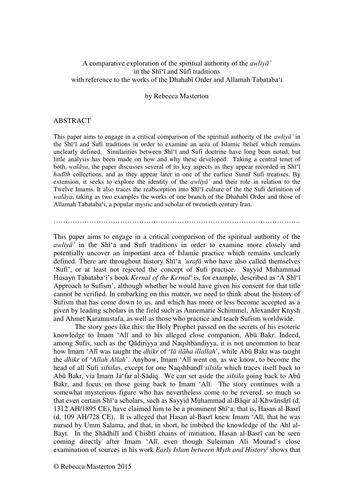
This paper aims to engage in a critical comparison of the spiritual authority of the awliyā’ in the Shī‘ī and Sufi traditions in order to examine an area of Islamic belief which remains unclearly defined. Similarities between Shī‘ī and Sufi doctrine have long been noted, but little analysis has been made on how and why these developed. Taking a central tenet of both, walāya, the paper discusses several of its key aspects as they appear recorded in Shī‘ī hadīth collections, and as they appear later in one of the earliest Sunnī Sufi treatises. By extension, it seeks to explore the identity of the awliyā’ and their role in relation to the Twelve Imams. It also traces the reabsorption into Shī‘ī culture of the the Sufi definition of walāya, taking as two examples the works of one branch of the Dhahabī Order and those of Allamah Tabataba‘i, a popular mystic and scholar of twentieth century Iran.
Something went wrong, please try again later.
This resource hasn't been reviewed yet
To ensure quality for our reviews, only customers who have purchased this resource can review it
Report this resourceto let us know if it violates our terms and conditions.
Our customer service team will review your report and will be in touch.
£12.00
